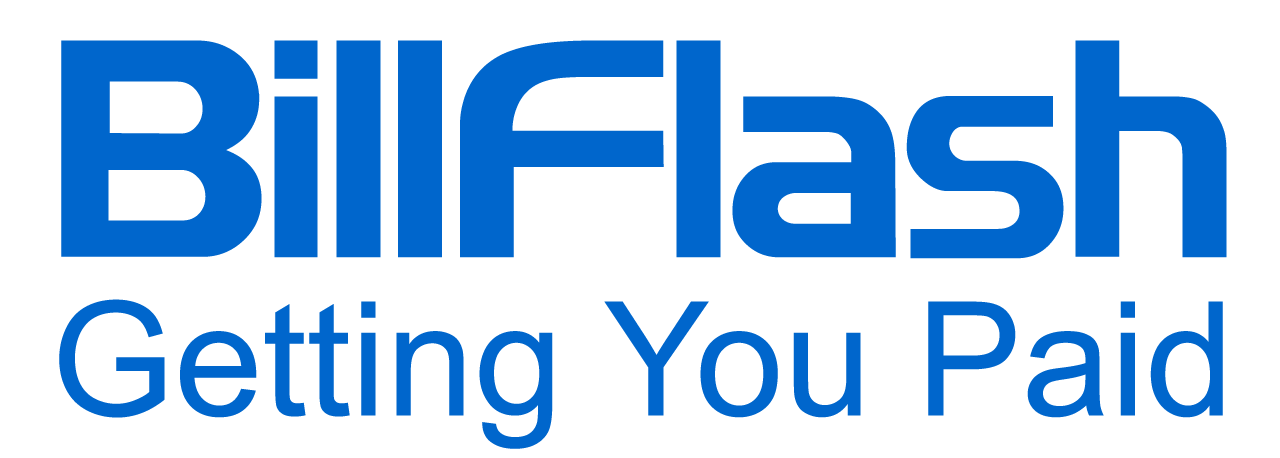Learn vital payment strategies to safeguard your practice’s revenue, enhance patient loyalty, and adapt to today’s digital healthcare trends.
As patients take on a larger share of healthcare costs, maintaining a steady cash flow in your practice is crucial. Since 2011, patient collections have increased by 133%, making them the primary revenue concern for providers. Today, the average wait for payment has stretched to 47 days, largely due to delays in insurance claim processing. These delays can result from coverage issues, medical circumstances, documentation requests, and disputes about a claim’s validity. The financial impact is substantial, making smart payment strategies essential in protecting cash flow.
More than 37 percent of providers are waiting on balances between $25,000 and $100,000, while another 32 percent are owed more overall. With insurers like Blue Cross Blue Shield responsible for a significant share of these amounts, your practice has to adjust its workflows to stay financially stable and continue delivering quality care because this kind of financial strain affects more than just your books. When cash flow is unpredictable, your practice may have to delay equipment upgrades, staff training, or even routine supply orders.
At the same time, your patients are navigating high-deductible plans and economic uncertainty, which makes them more sensitive to billing experiences. A confusing or inflexible payment process can quickly harm patient trust and discourage future visits. So, how do you collect what you're owed without compromising patient relationships? By making it easier for patients to pay. If you can do this, your practice can protect its revenue while strengthening loyalty. The five payment strategies that follow can help reduce risks, improve collections, and reflect the healthcare industry's shift toward transparency and digital convenience.

1. Provide Clear, Upfront Cost Transparency
Surprise bills lead to frustrated patients and delayed payments. Only 22% of consumers always know how much they owe before a provider visit. This leaves most unsure about their financial responsibility until after the appointment. The No Surprises Act, which took effect in 2022, has heightened patient expectations for price transparency, especially around out-of-network care. While the law mainly addresses surprise bills from out-of-network providers, it has shifted the conversation toward upfront cost disclosure.
Patients expect to know what they'll owe before receiving services, just as they would in any other consumer transaction. The value of proactive communication in effective payment strategies is clear. According to an HFMA survey, 60% of healthcare organizations contact patients one to 14 days before an appointment, with five days being the most common lead time. Healthcare organizations that engage patients early in financial conversations achieve better collection outcomes and shorter accounts receivable periods.
One way to meet rising expectations for cost clarity is to adopt pre-visit billing tools that provide estimates and payment options before the appointment. BillFlash PreBill, for example, sends a secure, HIPAA-compliant link via text or email. This directs patients to PayWoot.com, where they can view and pay their balances before their appointment. This upfront communication plays a key role in effective payment strategies. Patients understand their financial responsibility in advance, giving them time to plan and discuss payment options. The advance notice also creates opportunities for patients to make payments before their visit, improving cash flow and reducing post-service collection efforts.
When patients understand their financial responsibilities, they are more likely to keep appointments and less likely to dispute charges. This proactive approach to billing takes cost transparency from a compliance requirement to a strategic advantage for practice cash flow management.

2. Offer Multiple Ways for Patients to Pay
Patients expect the same digital convenience from healthcare that they get in retail and banking. That shift in expectations is showing up in how patients choose to pay. 62% of consumers prefer to pay their medical bills online, but many practices still rely heavily on traditional payment methods. That disconnect in payment strategies is driving patients away. 72% of consumers under the age of 35 have switched providers or are willing to, just for better payment experiences. When payment options are limited, so is your practice's ability to collect.
When your practice only accepts payments during office hours or through a single payment channel, it creates unnecessary friction that delays collections. Patients have diverse preferences for how and when they pay bills. Some prefer online payments for their speed, while others use mobile wallets like Google Pay and Apple Pay. Many patients also still value traditional mailed statements with return envelopes.
The value of offering in-office, online, mobile, and mailed payment options goes beyond convenience. Patients are more likely to pay faster when they can use their preferred method. Your practice can remove barriers to payment, accelerate cash flow, and enhance patient satisfaction through effective payment strategies. A patient who can pay immediately after an appointment using their preferred method is less likely to have an account fall into collections later.
BillFlash's Integrated Payment Solutions
BillFlash's integrated payment solutions make it easy. OnlinePay and OfficePay accept payments through multiple channels. Patients can pay using credit cards, ACH, digital wallets, checks, or phone payments. Whether your patients are at home, in the office, or on the go, they have convenient options that fit their preferences. The integration ensures all payments post automatically to patient accounts, removing manual data entry and reducing the risk of errors.
AutoPay and PlanPay also enable recurring and scheduled payments. With AutoPay, patients can set up automatic payments through their preferred method, ensuring timely payments without manual effort for anyone involved. PlanPay lets your practice offer structured payment plans that spread costs over manageable installments.
Both options make it easier for patients to stay current on their balances while providing your practice with predictable payment streams. Offering these automated options helps you collect payments faster by eliminating the need for patients to remember them. Multiple payment options aren't just about patient convenience; they're about maximizing collection opportunities at every stage of the payment process.

3. Automate Payment Collection With Smarter Workflows
Manual phone calls and payment chasing lead to staff burnout and increased costs. The time staff spends calling patients about overdue balances can get expensive and inefficient. It's not just front desk fatigue. Physicians spend an average of 15.5 hours per week on administrative duties, largely due to manual revenue cycle tasks. Incorporating automation into your payment strategies can be beneficial. Automation in healthcare reduces errors, accelerates collections, and ensures consistency. Automated systems don't forget to send payment reminders and work around the clock.
The consistency of automated workflows ensures every patient receives timely communication about their balance, eliminating gaps common in manual processes. Examples of effective automation include payment reminders triggered by account age or balance amounts, patient statements sent through secure email or text links, and recurring AutoPay solutions that collect scheduled payments without patient or staff intervention. These automated touchpoints keep patients engaged with their balances while freeing staff to focus on tasks that require human attention.
Turning Automation Into Real Results
One of the most effective ways to turn automation into real results is through smart, scheduled outreach. That's exactly where incorporating PayReminders into your payment strategies comes in. BillFlash PayReminders puts your billing on auto-pilot with a proven cadence of electronic reminders sent via text and email. The system automatically sends up to three messages per month via text or email at 7, 14, and 21 days after the first statement, encouraging patients to make payments promptly. Once payment is received, patients are automatically removed from the workflow, preventing them from receiving reminder communications after they have already paid.
This pre-collection approach is efficient and cost-effective because it manages your accounts receivable before it becomes past due. Additionally, you only pay for the reminders sent, and the system operates whether you use the default settings or customize the timing and content to match your practice's workflow. Automation transforms your billing from a reactive approach to a proactive process, accelerating payments while reducing the burden on your staff. The result is faster collections, lower costs, and a staff that can focus on practice activities that generate revenue.

4. Leverage Flexible Payment Solutions Patients Can Trust
Many patients can't afford large balances upfront, especially with high-deductible health plans. While minimum deductibles start at $1,650 for individuals and $3,300 for families, many plans require patients to pay significantly more before insurance coverage begins. For patients facing these high out-of-pocket costs, a single medical bill can create a significant financial burden. Without including financing options in your payment strategies, your practice risks unpaid balances and delayed care. Patients who can't afford to pay their full balance upfront face difficult choices. They could delay necessary care, skip appointments, or fail to pay their bills. All of these outcomes hurt patient health and practice revenue.
Offering flexible payment solutions addresses this challenge by providing patients with manageable ways to meet their financial obligations while ensuring your practice receives payment. FlexPay is a great payment strategy for practices. BillFlash FlexPay offers flexible financing to patients who can pay in monthly installments while your practice receives payment in full upfront. This arrangement benefits everyone involved. Patients get the flexibility to spread costs over time once they are approved after completing an online application that takes less than one minute to complete. With a 90% approval rate and a guaranteed 0% interest option for all approved patients, more patients can now proceed with needed appointments without financial stress.
For your practice, FlexPay eliminates the cash flow challenges and collection risks of traditional payment plans. You receive full payment the next business day with no recourse for non-payment. BillFlash manages ongoing patient payments, removing this task from your staff's growing workload. There's no risk to your practice, and your patients will be happy because they can attend the appointments they want or need, ensuring continuity of care.
5. Monitor Your Revenue Cycle With Real-Time Insights
In most cases, data-driven practices can identify bottlenecks and address them before they negatively impact cash flow. Practices that operate without a clear understanding of revenue cycle performance find it difficult to determine which payment strategies and processes are effective and which need to be modified. The information required to make well-informed decisions regarding staffing, practice changes, and collections methods can be provided through real-time reporting and analytics. The importance of reporting and analytics goes across multiple areas. For instance, collection rates by payer can indicate which insurance companies pay promptly and which ones cause delays.
Accounts receivable aging reports reveal where balances stall in the collection process. Patient payment trends reveal which communication methods and payment options prompt faster responses. When your practice has this information, it can optimize its payment strategies continuously instead of waiting for yearly reviews. Reports help you see what’s working and what requires improvement. Are electronic statements generating more payments than mailed bills? Are payment reminders sent after 14 days more effective than those sent after 21 days? These questions can be answered with reporting that tracks key metrics across the revenue cycle.

How BillFlash Changes Your Practice's Financial Reporting
Integrated platforms, such as BillFlash, provide a detailed financial picture with reporting. Instead of logging into multiple systems to piece together performance data, BillFlash delivers detailed, real-time revenue cycle metrics within an online portal. You can view the bills uploaded during a specific week and whether they were delivered by mail, email, or text. The reports display delivery confirmations, including who opened an eBill or received a mailed bill, track PreBill activity and payments, and measure PayReminders by recording reminders sent and payments received.
The system also monitors FlexPay engagement, including the number of patients who select payment plans, tracks mailed statement activity, and reports the collection amount. You can even view the source of payments, such as whether patients paid from a mailed bill, text, or email. With all this real-time data in one place, it is easier to understand your revenue cycle performance. You will always have a clear and comprehensive view that supports proactive health and financial clarity.
Protect Your Practice's Cash Flow With Proven Payment Strategies
Protecting your practice's cash flow in today's healthcare environment isn't optional; it's necessary if you want your practice to survive and grow. As patient responsibility continues to increase and payment difficulties persist, your practice needs proven strategies that make it easier for patients to pay without slowing collections. The five smart payment strategies we shared can all work together to create a better approach to cash flow protection:
- Upfront transparency sets clear expectations and allows for pre-visit collections.
- Multiple payment methods meet patients where they are and maximize collection opportunities.
- Automation reduces costs, eliminates mistakes, and creates consistent follow-up.
- Flexible financing removes affordability barriers while making sure your practice receives immediate payment in full.
- Data insights allow for consistent optimization and proactive problem-solving.
BillFlash provides a comprehensive solution for implementing these strategies through integrated billing, payment, and collections solutions. Instead of managing disconnected systems, you get a solution that combines all of your revenue cycle management functions. The result is faster payments, reduced staff burden, and better patient satisfaction.
Ready to protect your practice's cash flow through smart payment strategies? Schedule a demo with BillFlash today to see how our billing, payment, and collection software helps you receive payment faster, reduce staff burden, and keep patients satisfied.

